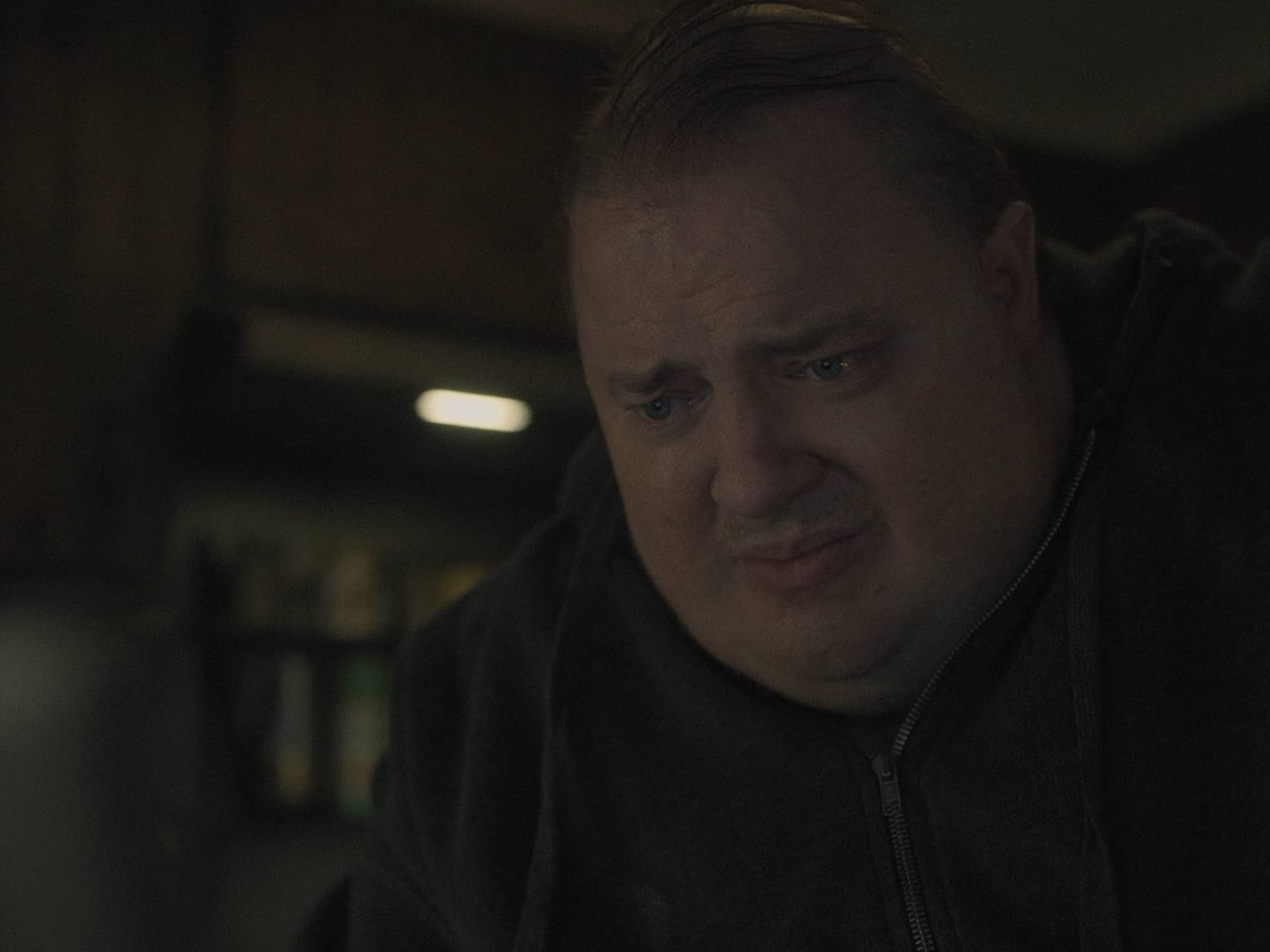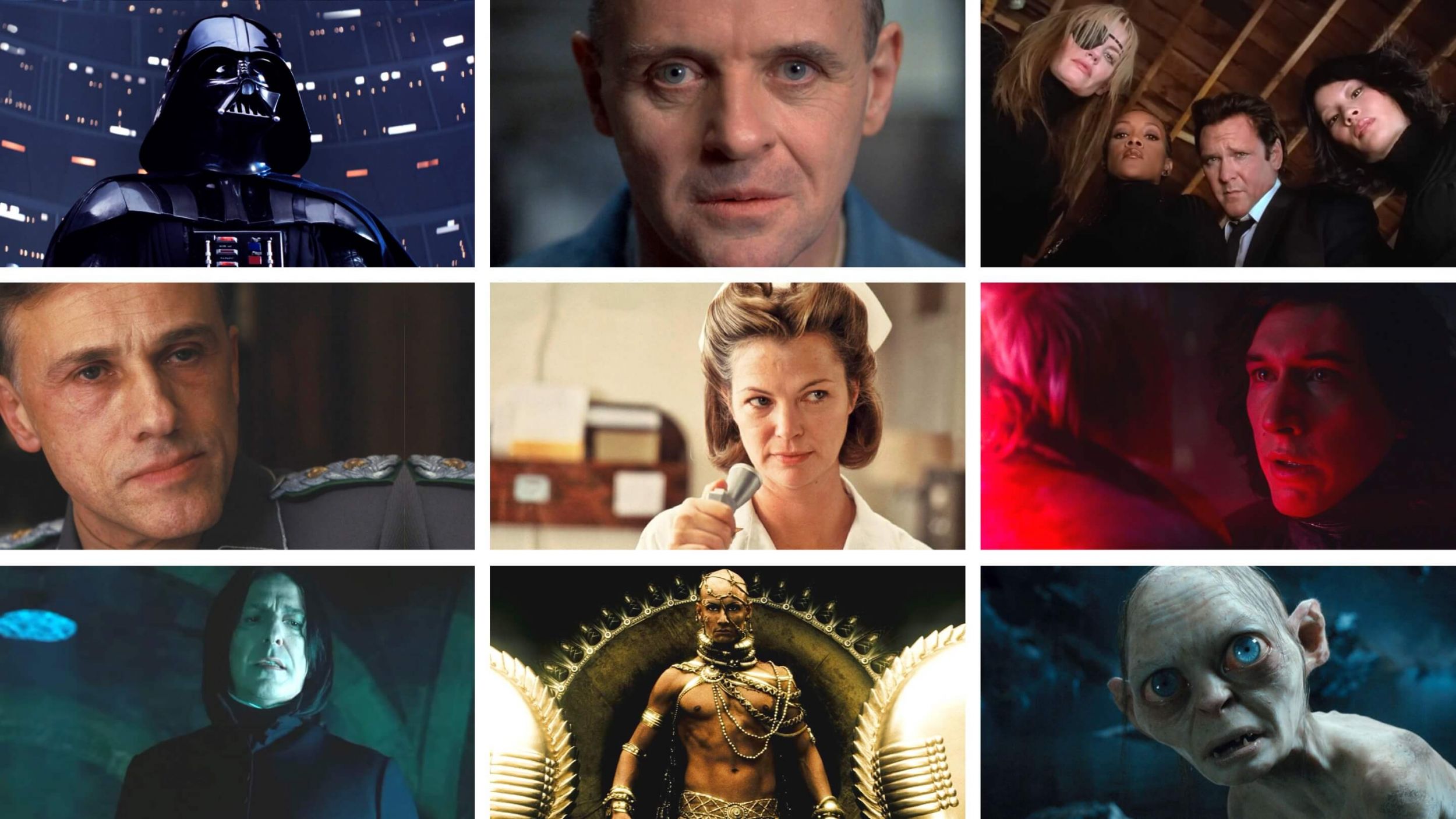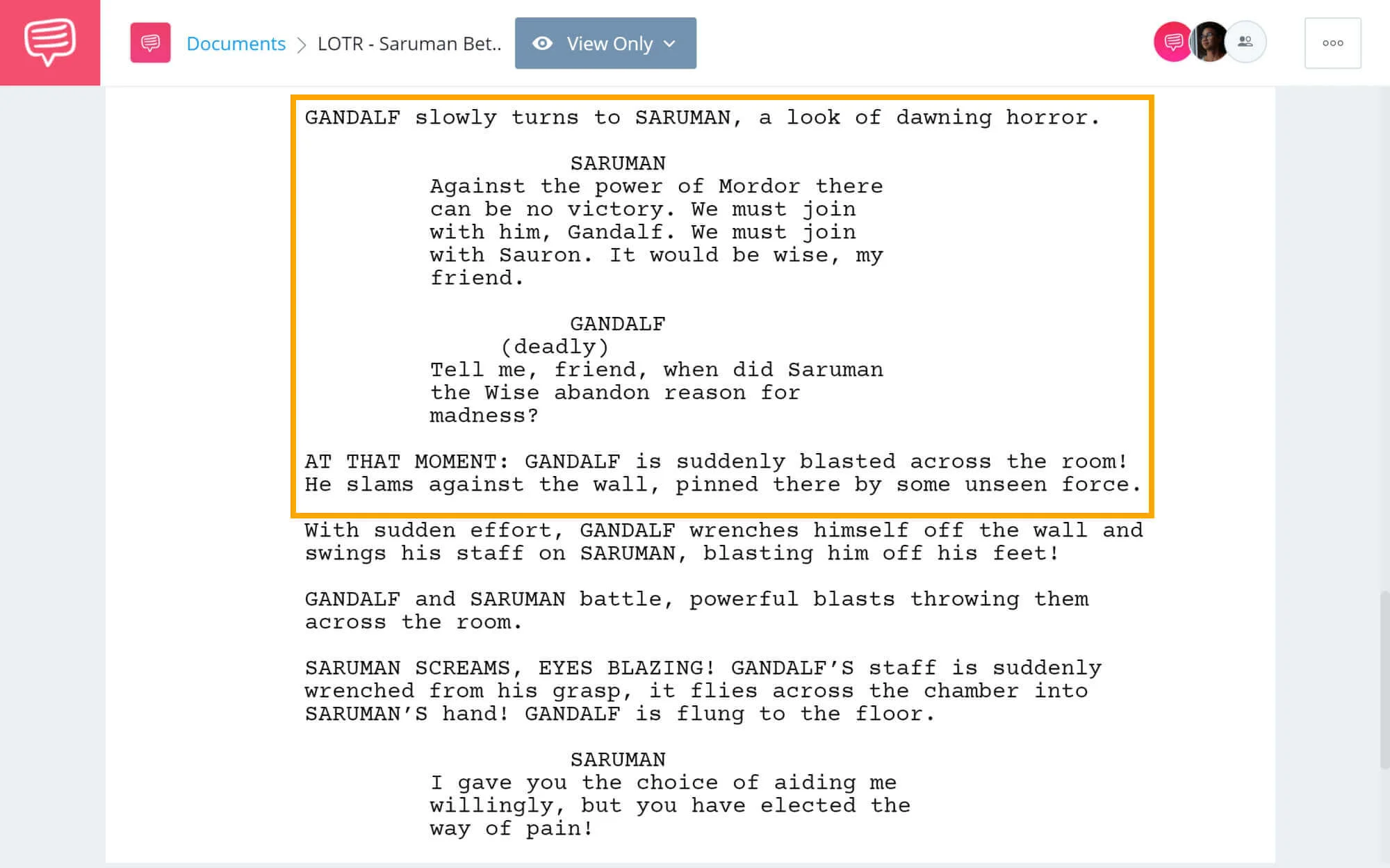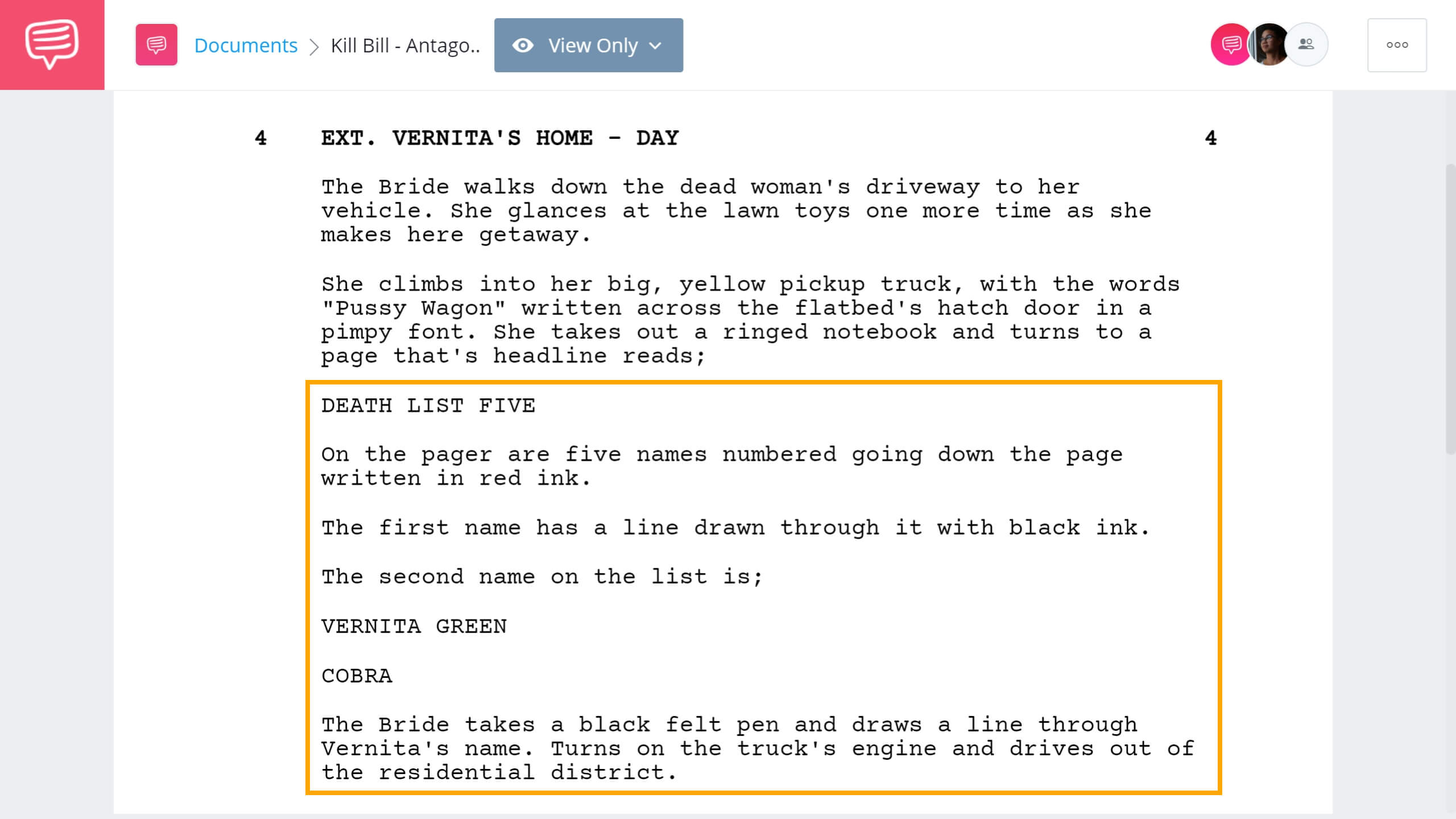What is an antagonist? The simplest explanation is that an antagonist represents the opposite of the protagonist. But there’s much more to the term than that. They are the source of conflict in a story — and if you know anything about storytelling, you know that conflict is necessary. So, by understanding how antagonists are used in storytelling, we’re better equipped to handle story conflict in our own writing. In this post, we’ll cover all the different antagonistic forces a writer can choose from, how they work, and how to decide which one works best for your next story.
What’s the Antagonist Meaning?
A quick definition of an antagonist
So, what does antagonist mean? Well, it usually means trouble for the protagonist (central force) of a story. There are plenty of different ways that writers use a variety of obstacles to antagonize their protagonists.
ANTAGONIST DEFINITION
What is an antagonist?
An antagonist is the force of a story that the protagonist contends with; whether it be human, natural or supernatural. Derived from the Greek word "agonizesthai," antagonist literally translates to English as “to contend with.” Every protagonist needs an antagonistic force. But that doesn't mean that force needs to be another character. The hero's main obstacle can be the environment, an animal like a killer shark, an idea, or something flawed within themselves.
Antagonist Character Traits:
- Juxtaposes Protagonist
- Often Villainous
- Halts the Progress of Protagonist
- Prominent in the story
- Has a goal in conflict with the protagonist’s
The relationship between protagonist and antagonist is key in storytelling. It's more than just "you can't have one without the other." This is not a "one size fits all" situation by a long shot. It's more like "who or what would be the perfect, most challenging obstacle for my hero?"
Let's explore this relationship a little closer.
Protagonist vs. Antagonist
What is a protagonist and antagonist?
The protagonist and antagonist operate in a symbiotic relationship with one another. Perhaps a good way to explore antagonists is to examine their opposite: the protagonist.
Here’s an example of how conflict is created and resolved between a protagonist and antagonist.
The protagonist: Character A wants thing X.
The antagonist: Character B wants thing Z.
Things X and Z are opposite each other.
Let’s plug in for those variables, working with The Lion King.
The protagonist: Simba wants justice for his murdered father.
The antagonist: Scar wants absolute power over the pride lands.
Notice how these two things work against each other? This is because the protagonist vs. antagonist struggle is the most common example of character conflict. The moment in which these characters and the things they want clash is called the climax.
WHAT’S AN ANTAGONIST IN CINEMA LOOK LIKE?
Antagonist examples in film
Perhaps more than any medium, film has been fascinated with the bad guy, the villain, the psychopath, the bully. In many movies, the antagonist is more interesting and/or memorable than the hero. To give us a quick rundown of some the best baddies, here’s a list of antagonist examples in movies:
- The Joker in The Dark Knight
- Darth Vader in The Empire Strikes Back
- Saruman in The Lord of the Rings
- Voldemort in Harry Potter
- Hannibal Lecter in The Silence of the Lambs
- Scar in The Lion King
- Hans Gruber in Die Hard
- Captain Hook in Peter Pan
- Gordon Gekko in Wall Street
- Hans Landa in Inglourious Basterds
- Agent Smith in The Matrix
All of these antagonist examples are villainous in nature — but it’s important to note that not all antagonistic characters are villains! We’re going to cover non-villainous antagonists in a bit, but first, let’s break down the “bad guys.”
Antagonist Definition Explored
What are the types of antagonists
Just as there is a variety of protagonists, there are a few types of antagonists a writer can choose from. When planning out any narrative (fiction, play, video game, screenplay, etc.), it's important to know what these options are, how they work, and which one is best suited to your particular story.
Here's a quick list of the main types of antagonists, which will explore individually in further detail below:
- Villain
- Anti-Villain
- False Antagonist
- Hidden Antagonist
- Inanimate Antagonistic Force
- Inner Antagonist
- Hero Antagonist
Of course, there is some overlap between these different types. But they also provide their own unique flavor of antagonism. Like pairing the right wine with the right meal, a writer should have a firm grasp of their individual characteristics. Let's start with the most common: the villain.
an Antagonist in a Story Who’s Evil
Antagonist vs villain
It's a common assumption that every antagonist is a villain. And while many of them are, there are other types of antagonists. The villain is just the most common and memorable.
Most antagonists tend to be villainous by nature. These characters represent a polar opposite view of the world than the protagonist. The villain will also do anything possible to impede the progress of the protagonist.
One classic example of the villain is The Joker in Christopher Nolan’s The Dark Knight; everything about his character is supposed to instill within us a sense of villainy.
This next video explores why The Joker is a perfect antagonist for Batman. Specifically, how the two characters mirror one another like two sides of the same coin.
The Joker is a character who works to generate chaos in Gotham. His entire existence serves to juxtapose Batman, the protagonist of the story.
Another similar example is Saruman from The Lord of the Rings, a character who impedes the Fellowship’s journey to destroy the one true ring of power.
We imported The Fellowship of the Ring script into StudioBinder’s screenwriting software to see how Saruman betrays Gandalf — and how he reveals he’s working to stop Frodo’s journey. As you’re reading, think about how Saruman is highlighted as a villain.
Click the image below to read the entire scene or head over to our Fellowship script breakdown to read the full script.
Antagonist Examples in The Lord of the Rings • Read Full Scene
Although we knew before this moment that Sauron was evil, we weren’t quite sure what role Saruman was going to play. But in revealing his villainous plan, we see that he is the most direct character-based obstacle for the Fellowship.
What’s an Antagonist Who is Good?
The hero antagonist
The hero antagonist is almost always used to oppose an anti-hero. What’s an anti-hero? We define an anti-hero as “a narrative protagonist who is defined by their own self-interest… who often feels rejected by society, and veers down a self-destructive path that results in isolation or death.”
Frank Abagnale (Leonardo DiCaprio) from Catch Me If You Can is a great example of an anti-hero — but he’s also a person who we sympathize with on an emotional level. This is because we’re allured by his intellect and empathetic towards the travails he endured as a child.
Abagnale’s primary antagonist is Carl Hanratty (Tom Hanks). We as an audience are largely inclined to align ourselves with Carl’s morals as he searches to capture fraudster Abagnale.
Carl is portrayed as sensitive and well-intentioned, which helps us to connect with him even though we don't actually want him to catch Frank.
These two characters operate against one another in a game of cat and mouse. Carl wants to believe that Frank will show virtue.
Throughout Catch Me If You Can, we see clear examples of how a protagonist and antagonist work against one another. Frank is an anti-hero protagonist and Carl is a hero antagonist.
Man vs Nature
The natural world fights back
Usually, a character confronts internal (conflict within themselves) or external (conflict with the world or other characters). Both are great options because internal and external conflict can energize your story.
Although rare, there are cases of stories in which the antagonist is an environmental force. This environmental antagonist is rooted in the age-old conflict structure of “man vs. nature.”
Think of the disaster film genre and how filmmakers have found ways to turn nature against us. Earthquakes, tornadoes, floods, tsunamis, etc. are all fantastic forces to put your main characters up against. Movies like this remind us that even though we may be atop the food chain, we have no actual control over the nature world around us.
A strong example of “man vs. nature” or rather “woman vs. nature” in film is in one of Alfred Hitchcock’s best movies: The Birds.
This next video from The Take shows us how the central power conflict in The Birds is layered with subtext. It also shows us how Hitchcock communicates conflict in a terrifying way.
Antagonist Examples • The Birds Video Essay by The Take
In this Hitchcock classic, Melanie Daniels (Tippi Hendren) and the people of Bodega Bay are inexplicably attacked by crazed birds.
“The birds” represent the antagonistic forces of nature, while Melanie is the protagonist of the story.
What makes this conflict work so well though is how, in many ways, it’s entirely inexplicable. This conflict results in a sense of the supernatural — and it activates the mind of the audience to guess as to what the subtext means.
Types of Villainy
The Anti-Villain
We’ve already mentioned the anti-hero, the protagonist who doesn’t do heroic things. But as we noted, the opposite of an anti-hero is the hero antagonist. So what is an anti-villain?
Have you ever watched a villain’s climactic monologue about their goals and reasons and thought, “Wait, this guy’s got a point”? If so, you’ve been watching an anti-villain.
An anti-villain is a character who is doing bad things for good reasons. Take Roy Batty from Blade Runner. For all intents and purposes, Batty is the villain of the film, wreaking havoc on earth while trying to find Tyrell.
But when we hear why Batty is doing what he’s doing, it makes a lot of sense. He’s been doomed to a short lifespan, and wants to demand more time from his creator. The anguish he feels is understandable.
Blade Runner final scene
We can also look at Syndrome from The Incredibles. We can all agree that he’s the bad guy in the film; he’s intent on killing innocent people. But his overall philosophy isn’t so crazy.
Syndrome thinks that a world ruled by people who are lucky enough to have super genes is both wrong and dangerous. He might have a point.
Despite its kind of complicated definition, the anti-villain is a pretty common protagonist foil. It’s much more interesting to have a villain who exists in the moral gray than to have one who is evil for evil’s sake.
The Protagonist’s Foe
The False Antagonist
The false antagonist asks the question, “What if your bad guy isn’t actually the bad guy and they were actually a good guy the entire time?”
Okay, maybe that’s not super clear. The false antagonist is a character who presents themselves as the villain for a portion of a film or series, only to eventually reveal themselves to be on the side of the protagonist.
Usually, this type of villain is created by withholding information from the protagonist and the audience. Think of Harry Potter’s Severus Snape. For the majority of the franchise, both Harry and the audience think that Snape is a villain, and even a potential Deatheater.
But this is all turned on its head when it’s revealed that Snape has in fact been protecting Harry since his mother’s death.
Severus Snape Memories
And Snape isn’t the only false antagonist of the Harry Potter series. Sirius Black, too, plays the role in Harry Potter and the Prisoner of Azkaban. Sirius is initially presented as a vicious villain who played a key role in the death of Harry’s parents.
Take a look at his introduction, in which director Alfonso Cuarón leans into Sirius’s evil reputation.
Sirius Black • scary man
Gary Oldman also enhances the fake-out with his performance, baring his mangled teeth and flashing a crazed stare. This is a man who looks like a typical villain.
But as the film progresses, it turns out Black is actually one of Harry’s closest allies, and for the rest of his time in the franchise proves to be a crucial friend and mentor.
Harry Potter shows us the utility of a false antagonist. The character keeps the audience on their toes, while implicitly teaching us not to judge a book by its cover.The Protagonist’s Foe
The Hidden Antagonist
The hidden antagonist is the opposite of the false antagonist. Here, a character who we initially think is benevolent ends up being a villain.
A classic example can be found in Coraline, where the protagonist finds Other Mother and Father. At first, Other Mother and Father appear to be everything Coraline’s actual parents aren’t: attentive, fun-loving, and caring.
But as the film progresses, it turns out that Coraline’s new parents are all they’re cracked up to be, and in fact have nefarious ulterior motives.
Other Mother True Motive
Coco also has a great hidden antagonist (spoilers ahead, folks). At the beginning of the film, Miguel is obsessed with Ernesto de la Cruz, a famous dead musician.
Miguel is understandably ecstatic when he thinks he’s discovered that Ernesto is his great-great-grandfather, and when he visits him in the Land of the Dead, all seems to be going swimmingly.
But Miguel soon learns that Ernesto actually killed his great-great-grandfather, and on top of that, is a fraud. It results in this heart-pounding scene:
The realization
As Coco illustrates, the hidden antagonist makes for some great dramatic moments filled with shock, betrayal, and general emotional anguish. These are emotions you may want to avoid in your everyday life, but they make for great cinema.
Villainous Characters
The Inner Antagonist
In a way, we all have an inner antagonist. We know we shouldn’t have another Reese’s cup, but we have it anyway. We should probably go to bed now so we can feel well-rested tomorrow, but that hour-long “Unbelievable Building Demolitions Compilation” video looks too good to pass up.
The inner antagonist is the embodiment of the old quote, “There are two wolves inside you and you have to feed the good one.” This is where the protagonist feeds the bad one, making self-destructive decisions that make them their own downfall.
This is a recurring theme in many Darren Aronofsky films. In Black Swan, Nina is going up against newcomer Lily, but really, it’s her own obsessive nature which drives her to the brink.
The Whale, too, has a protagonist who is their own worst enemy. Charlie is eating himself to death, and even though characters who care about him are begging him to stop, he won’t (or can’t).

Things aren’t going well for Charlie
Aranofsky’s films are often characterized as hard to watch, and a big part of this is his use of the inner antagonist. It can be painful and frustrating to watch a character self-immolate. With an external enemy, even if a protagonist loses, it can be a noble and entertaining battle.
An internal enemy can be much more, diffucult, nuanced and, unfortunately, true to life.
Antagonist Definition
What are secondary antagonists?
In most stories, there is only one protagonist. However, there can be a countless number of antagonists. In some films, there’s a primary antagonist, and then several secondary antagonists.
One of Quentin Tarantino’s best films, Kill Bill, has a primary antagonist (Bill) and several secondary antagonists (the Deadly Viper Assassination Squad).
In this next scene, we’ll see how Tarantino writes secondary antagonists into his Kill Bill script through the use of The Bride’s “Death List.”
What’s an Antagonist? • Kill Bill Script
One helpful trick is to think of secondary antagonists as the mini-bosses you face in a video game before getting to the final boss.
In Kill Bill, The Bride has to face-off against these mini-bosses before getting to the final boss.
UP NEXT
What is a Protagonist?
Protagonists and antagonists work against one another in a contentious, yet symbiotic relationship. We’ve gone over the different types of antagonists with examples from film and television, so let’s do the same with protagonists. With examples from Star Wars, Tenet, and more, we break down how protagonists are used in writing so that you’ll be ready to tackle character conflict in your own scripts.


